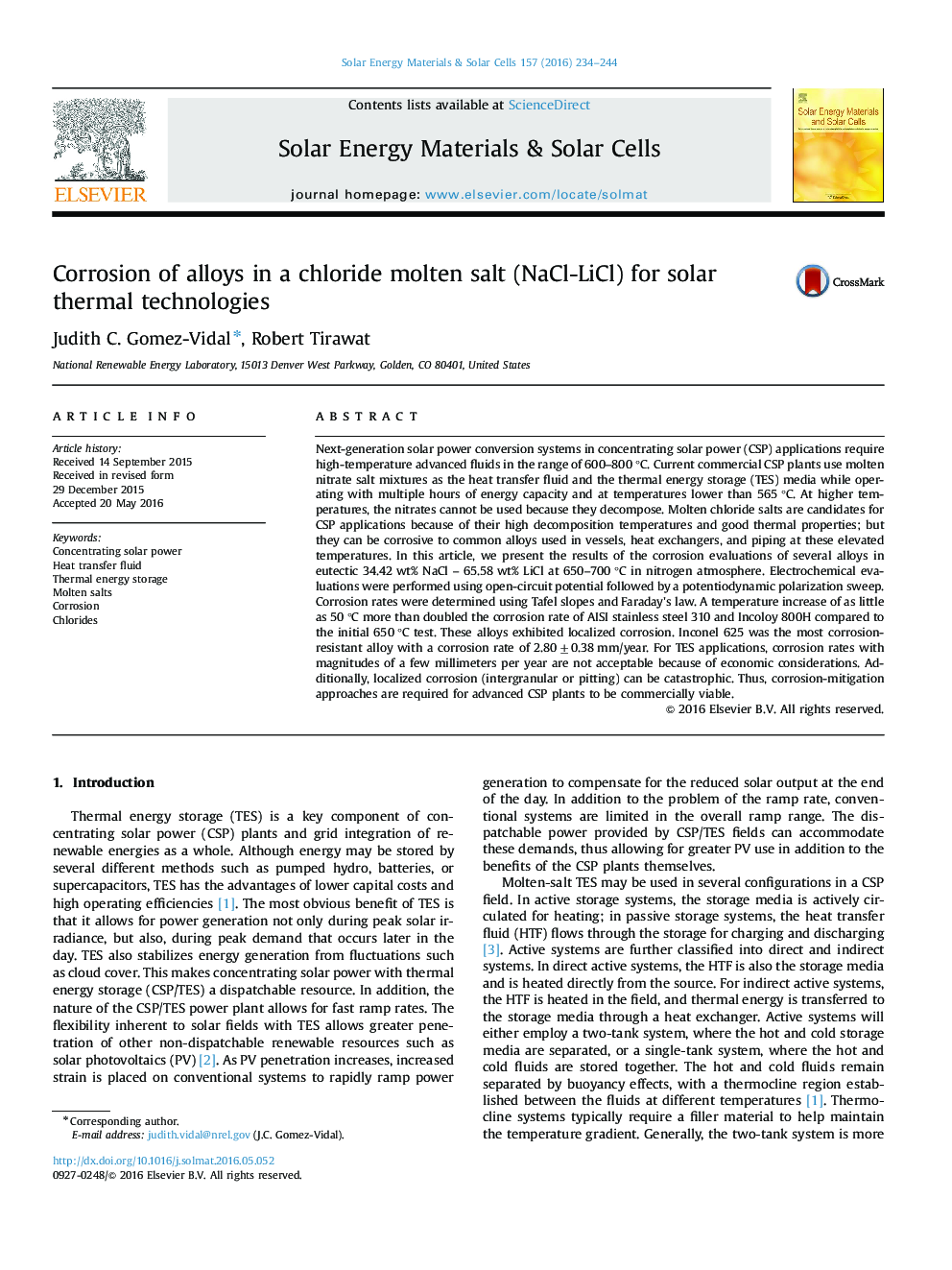| Article ID | Journal | Published Year | Pages | File Type |
|---|---|---|---|---|
| 6534570 | Solar Energy Materials and Solar Cells | 2016 | 11 Pages |
Abstract
Next-generation solar power conversion systems in concentrating solar power (CSP) applications require high-temperature advanced fluids in the range of 600-800 °C. Current commercial CSP plants use molten nitrate salt mixtures as the heat transfer fluid and the thermal energy storage (TES) media while operating with multiple hours of energy capacity and at temperatures lower than 565 °C. At higher temperatures, the nitrates cannot be used because they decompose. Molten chloride salts are candidates for CSP applications because of their high decomposition temperatures and good thermal properties; but they can be corrosive to common alloys used in vessels, heat exchangers, and piping at these elevated temperatures. In this article, we present the results of the corrosion evaluations of several alloys in eutectic 34.42 wt% NaCl - 65.58 wt% LiCl at 650-700 °C in nitrogen atmosphere. Electrochemical evaluations were performed using open-circuit potential followed by a potentiodynamic polarization sweep. Corrosion rates were determined using Tafel slopes and Faraday's law. A temperature increase of as little as 50 °C more than doubled the corrosion rate of AISI stainless steel 310 and Incoloy 800H compared to the initial 650 °C test. These alloys exhibited localized corrosion. Inconel 625 was the most corrosion-resistant alloy with a corrosion rate of 2.80±0.38 mm/year. For TES applications, corrosion rates with magnitudes of a few millimeters per year are not acceptable because of economic considerations. Additionally, localized corrosion (intergranular or pitting) can be catastrophic. Thus, corrosion-mitigation approaches are required for advanced CSP plants to be commercially viable.
Keywords
Related Topics
Physical Sciences and Engineering
Chemical Engineering
Catalysis
Authors
Judith C. Gomez-Vidal, Robert Tirawat,
